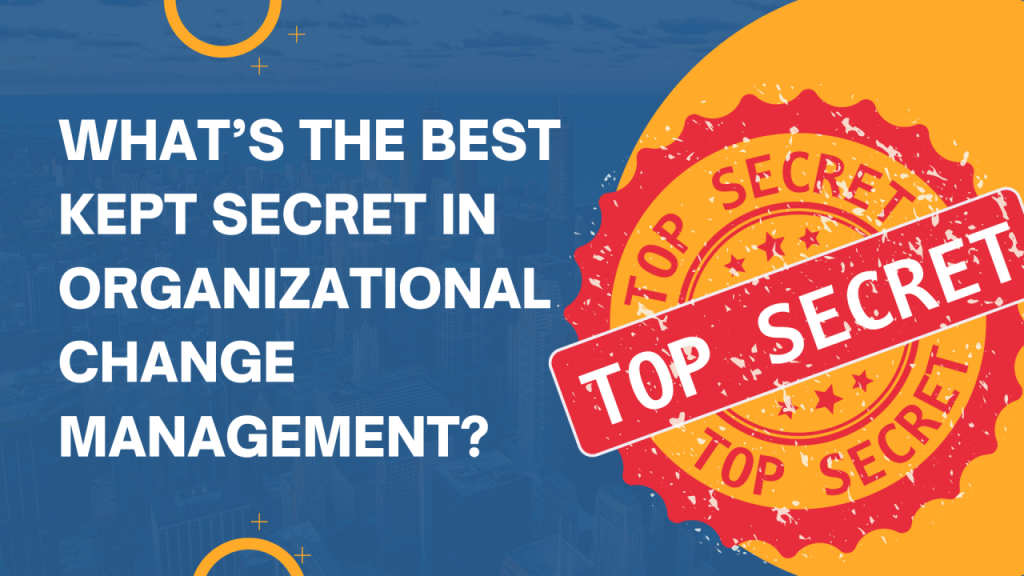
Imagine a bustling company poised to roll out a new Quality Management System (QMS) as part of an ISO certification effort. The goal? Sharpening the competitive edge for marketing leverage while enhancing operational quality. Yet, as deadlines tighten and process owners juggle their day jobs with new demands, it becomes increasingly clear: the real challenge isn’t the system implementation itself but managing the human response to this change. With team members swamped by training courses and escalating workloads, and the effect on colleagues’ quality and process mindset negligible, this project illuminates a fundamental, often overlooked truth in change management…
In the vast, evolving landscape of change management, there exists a common narrative that focuses on transforming organizations through structural, systematic, and process-driven changes. This perspective is deeply ingrained in the fabric of Organizational Change Management – OCM, a field that has garnered formal recognition and academic rigor, with certifications, specialized courses, and even institutions like Harvard Business School dedicating resources to define and teach it. However, nestled within the complexities of OCM lies a best-kept secret, a truth so fundamental yet often overlooked: organizations don’t change, people do.
The Illusion of Organizational Change
At its core, the concept of organizational change captures images of revamped structures, new systems, and overhauled processes. The corporate world is replete with tales of transformation initiatives, many backed by heavy investments in training programs and consultancy services. It’s a domain where terms like ‘change management’ and ‘organizational restructuring’ are used interchangeably, suggesting a direct manipulation of organizational elements can precipitate change. This belief is often underpinned by an evolving “OCM industry” with best practices, standard tools and certification programs.
Yet, amidst this structured complexity, the best-kept secret of change management remains simple yet profound: “Organizations don’t change. People do.” This insight shifts the focus from abstract organizational entities to the individuals that animate them. Despite the structured methodologies and frameworks developed around OCM, the crux of any change initiative’s success lies in the ability to influence individual behaviors, mindsets, and attitudes. Even the definitions provided by esteemed institutions implicitly acknowledge that the essence of organizational change is, in reality, personal transformation on a collective scale.
Why Focus on People?
The rationale for a people-centric approach to change management is multilayered, rooted in psychological, behavioral, and empirical evidence. At the heart of every organization are individuals whose collective behaviors, beliefs, and interactions define the organizational culture and operational efficacy. Understanding the human response to change — the fears, the resistance, and the potential for growth — is pivotal. Organizations that achieve remarkable transformations typically did so by concentrating on personal engagement and development, from nurturing leadership qualities to fostering a culture of continuous learning and adaptation.
Strategies for People-Centric Change Management
Transitioning to a people-centric model of change management necessitates a shift in strategy, including…
– Engaging Communication: Tailor messages to address individual concerns and motivations, ensuring clarity and relevance to each person’s role and aspirations.
– Empathetic Leadership: Leaders must embody empathy, understanding the emotional landscapes of their teams, and using this insight to guide the change process compassionately.
– Training and Development: Equip individuals with the skills and knowledge they need to navigate and contribute to the change, emphasizing personal growth as a component of organizational transformation.
– Feedback Loops: Establish mechanisms for continuous feedback (from day 1!), creating a dialogue that allows for real-time adjustments and acknowledges the value of each employee’s perspective.
Yet, focusing on individual change within the broader scope of OCM presents its own set of challenges, from identifying and addressing the varied responses to change across a diverse workforce to maintaining momentum in the face of inevitable setbacks. Preparing for and overcoming these challenges requires a nuanced understanding of stakeholder analysis, the development of personalized change plans, and the provision of ongoing support to facilitate adjustment and foster resilience. The concept of servant leadership is highly related to an empathetic change management and leadership style.
So – the essence of effective change management lies not in the sweeping restructuring of organizations but in the nuanced, thoughtful transformation of the people within them. This people-centric approach demands a deeper engagement with the individual components that collectively define an organization, a commitment to understanding and addressing the human aspects of change. As change managers and organizational leaders, embracing this perspective can enrich our strategies, enhance our effectiveness, and ultimately lead to more meaningful and sustainable transformations.
Do you have experience and insights on navigating the people-centric aspects of change management?
This is a copy of the same post on my LinkedIn blog. To comment and join the discussion on this topic switch to LinkedIn. Follow me for regular updates and blog articles: https://www.linkedin.com/in/drnilskoenig/
